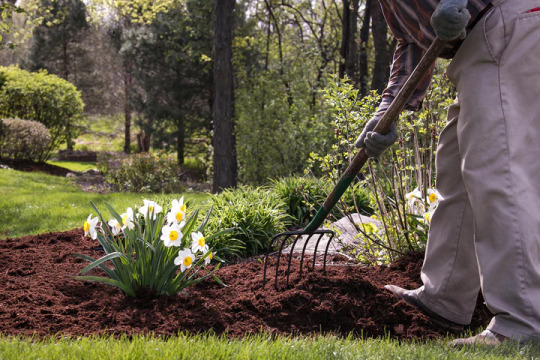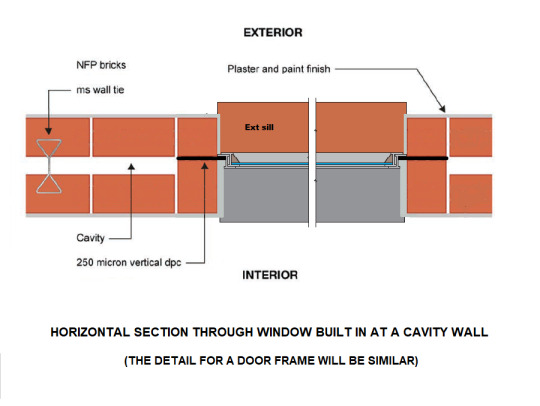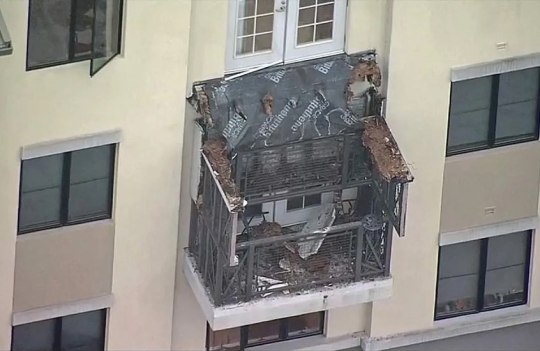#propertyinspection
Text
Outsource Property Insurance Inspection Services
Looking for a reliable partner to outsource your Property Insurance Inspection Services?
At @prologiq, we offer comprehensive Property Insurance Inspection Services to P&C Insurance Companies and Field Services Organizations across the USA.
We utilize advanced tools and technologies to deliver high-quality property inspections that meet industry standards.
Contact us today to schedule your property insurance inspection visit: https://www.prologiq.in/ or mail us at: [email protected].

#prologiq#propertyinsurance#propertyinspection#insuranceinspection#propertyprotection#inspectionservices#homeinspection#propertypreservation#insurancebackoffice
3 notes
·
View notes
Text
Embrace the Renewal of Spring with a Fresh Clean-Up

As the days grow longer and the weather begins to warm, it's the perfect time to shake off the winter blues and embrace the rejuvenating spirit of spring. A spring clean-up is the ideal way to kickstart the season, refreshing your home and surroundings to create a clean and revitalized space. From decluttering and organizing to deep cleaning and outdoor sprucing, here's how to tackle your spring clean-up with ease:
Declutter and Purge: Start your spring clean-up by decluttering and purging unnecessary items from your home. Go through closets, cabinets, and storage spaces to identify items you no longer need or use. Donate gently used clothing, household goods, and electronics to charity, sell items online or at a garage sale, and toss out broken or expired items. Clearing out clutter creates space and promotes a sense of openness and renewal in your home.
Organize and Streamline: Once you've decluttered, take the time to organize and streamline your belongings for maximum efficiency and convenience. Invest in storage solutions such as bins, baskets, and shelving to keep items neat and accessible. Label containers and designate specific areas for different categories of items to maintain order and reduce clutter going forward.
Deep Clean: Give your home a thorough deep clean to remove dust, dirt, and grime that have accumulated over the winter months. Clean windows, walls, and baseboards, vacuum carpets and upholstery, mop floors, and wipe down countertops and surfaces. Don't forget to clean overlooked areas such as ceiling fans, light fixtures, and air vents for a fresh and healthy living environment.
Refresh Fabrics and Bedding: Wash or dry clean curtains, drapes, and bedding to remove dust and allergens and give them a fresh scent. Vacuum upholstered furniture and spot clean any stains or spills. Consider rotating mattresses and flipping cushions to prolong their lifespan and maintain comfort and support.
Tackle Outdoor Spaces: Extend your spring clean-up to outdoor areas such as patios, decks, and gardens. Sweep away debris, power wash surfaces, and clean outdoor furniture and accessories. Prune bushes and trees, weed flower beds, and mulch garden beds to prepare for spring planting. Clean gutters and downspouts to prevent water damage and ensure proper drainage.
Inspect and Maintain: Use your spring clean-up as an opportunity to inspect your home for any maintenance issues that need attention. Check for leaks, cracks, or damage in plumbing, roofing, and siding. Test smoke detectors, carbon monoxide detectors, and fire extinguishers, and replace batteries as needed. Schedule routine maintenance for HVAC systems, appliances, and other home systems to keep them running smoothly.
Embrace Green Cleaning: Consider using eco-friendly cleaning products and methods to minimize your environmental impact and promote a healthy living environment. Opt for natural cleaning solutions such as vinegar, baking soda, and lemon juice, and use reusable cleaning cloths and microfiber mops to reduce waste.
By following these tips for a spring clean-up, you can refresh and revitalize your home for the season ahead, creating a clean, organized, and inviting living space that brings joy and renewal to your life. From decluttering and deep cleaning to outdoor sprucing and green cleaning, embracing the spirit of spring clean-up sets the stage for a fresh start and renewed energy in your home.
0 notes
Text
The Art of Property Perception: Unveiling What Matters Most - Egemen Mustafa Şener
During property viewings, trust your instincts and consider the flow of natural light throughout the day, as it can greatly impact your mood and energy efficiency. Assess the functionality of the layout; does it suit your daily routines and future plans? Take note of storage options and potential renovation opportunities that could add value. Investigate the condition of major systems like HVAC, plumbing, and electrical. Engage with the community to get a sense of the neighborhood dynamics and safety. Remember, the right property is not just a structure but a reflection of your lifestyle.
Egemen Mustafa Şener

0 notes
Text
Why Home and Commercial Reinspections are So Important | Assured Home Inspectors
Discover why reinspections are just as important as the initial inspection. Learn more with Assured Home Inspectors today.
0 notes
Text
Cavity Walls In New Buildings In South Africa

SANS 10400-XA (Energy Usage in Buildings)
The 2021 SANS 10400-XA revision requires the construction of cavity walls in place of 230 mm solid brick external walls. This energy-saving change is applicable in all the energy zones in South Africa except in zones 3, 5 and 5H.
How wise this course of action is considering the lack of skills in the building trade will have to be seen!
What is a cavity wall?
A cavity wall consists of two skins separated by a hollow space (cavity). The advantage is that a cavity wall gives better thermal insulation than a solid wall. The space between the two leaves of cavity walls reduces heat transmission into the building from outside.
The following are the advantages of cavity walls when compared to solid walls.
- This type of wall gives better thermal insulation than solid walls.
- The hollow space between leaves prevents moisture penetration through the wall from the outside. This prevents dampness internally.
- They also act as good sound insulators.
- These walls also prevent efflorescence from occurring.
Construction of cavity walls


The construction of these walls is technically more difficult than for solid 230 mm walls.
- The cavity between the two masonry leaves should be a minimum of 50 mm. The gap must be consistent from the bottom of the wall to the top.
- Below the DPC level, the bricklayer must fill up the wall cavity with concrete or mortar before installing the DPC.
- The bricklayer then installs the DPC at slab level to step down from the slab-level interior wall across the cavity to the outer wall and weep holes. Its purpose is to drain away any water in the cavity towards the weep holes to discharge it outside.
- Weep holes must be provided in the external leaf above the Damp Proof Course (DPC) at every 4th brick horizontally.
- The bricklayer must build in wall ties at every 5th course of brickwork vertically and space them horizontally at every second brick to tie the two leaves of brickwork together.
- Mortar dropping down in the cavity can stop water from draining away. The bricklayer should leave some bricks out temporarily at the DPC level to clear mortar droppings at the end of each day’s work.
- The normal method of preventing mortar droppings from falling to the base of the cavity is to use a cloth-rapped batten (38 x 38 mm) or specially sized 50 x 38 mm planed to 45 mm. The bricklayer places the batten on the wall ties while building the wall. The bricklayer raises the batten, using wire tied to its ends and then positions it on the next row of ties.
- Furthermore, the bricklayer should install a vertical DPC on the sides of doors and windows when closing off the cavity wall. This is to prevent water from driving to the inner face.
- In addition, the bricklayer should install a layer of DPC and weep holes in the cavity above exposed doors and windows similar to the DPC at floor level. This is to prevent moisture from penetrating the inner leaf.
- At the roof line, the bricklayer should fill or brick up the cavity for two or three courses below the roofline to stiffen and distribute the load over both leaves. He should also build in roof ties at this level to tie down the roof trusses or beams.
- No wide brick force can be used to span both leaves and cavities of brickwork. A 90 mm width of brickforce will need to be used on every 5th layer of brickwork on both leaves up to window or door height and every course above that until the cavity is closed at roof height.
My Concerns with the new requirements
The Western Cape Province has already been following this practice for many years. Cavity walls are also better for damp prevention than solid walls. The introduction of cavity walls nationally is to satisfy regulatory requirements for building energy efficiency.
However, such sweeping changes to the construction of brick buildings in other areas of the country may have serious consequences because of skills shortages. They may lead or may have led to substandard work because of the lack of sufficient skills and training of bricklayers and their supervisors!
The newer generation of bricklayers and builders never adhered fully to the requirements of the building regulations before with the construction of solid 230 mm walls! Most of them have had no experience with building cavity walls either!
I have listed some of the issues I have seen on building sites below:
- In my experience, the bricklayers in the building trade never used collar jointing of the solid brick walls leading to weakened wall structures.
- The bricklayers seldom place the DPC on a half layer of mortar on the brickwork. Instead, they place the DPC directly on the brickwork. This often led to moisture intrusion in the structure at the DPC level.
- Generally, no bricklayer has installed DPC on the sides or above the door and window openings to prevent moisture intrusion through the wall at the windows and doors inland from the coastal areas.
- Few bricklayers build in the correct number of layers of brickforce reinforcing above windows and doors.
- Often, the bricklayers tooth the brickwork of the internal walls to external walls and corners instead of stepping back the brickwork as required.
- The mixing of large amounts of mortar resulting in the retempering (adding additional water) of mortar is a common practice. This causes weakened mortar and brickwork.
Most of the issues result from a lack of knowledge and training. This includes not only the bricklayers but also the supervisors!
So how do we get the bricklayers to build the more technical cavity walls correctly?
- One way is to train the supervisors who in turn can train the bricklayers!
- Various brick associations and training schools offer bricklaying training. The various training associations and schools may be open to do on-site training.
- Both the supervisors and the bricklayers can learn from videos that show how to build cavity walls. They all have cellphones on which they can view the videos.
- Articles by the Clay Brick Association can update supervisors and bricklayers with the technicalities of building a cavity wall.
Let us hope the above happens so that new homeowners will have properly constructed homes!
Conclusion
With the correct training, newly built cavity walls will provide the thermal benefit required by the new revision of SANS 10400-XA. In addition, the construction of cavity walls will minimise moisture intrusion into new buildings if constructed properly. They also provide sound insulation benefits.
Read the full article
#cavitywall#Homebuyersinspection#homeinspection#Homeinspector#houseinspections#maintenanceinspection#propertyInspection
0 notes
Text
The Benefits of Regular Maintenance Inspections for Homeowners
Introduction
Owning a home is a significant investment, and ensuring its longevity and value requires proactive measures. Regular maintenance inspections are a cornerstone of responsible homeownership, offering a multitude of benefits that extend beyond the surface. In this guide, we will explore the advantages of incorporating regular maintenance inspections into your homeownership routine.
Preserving Property Value
Identifying and Addressing Issues Early
Regular inspections enable homeowners to identify and address issues at an early stage. Whether it's a leaky roof, a plumbing problem, or structural wear, catching these issues before they escalate can save homeowners substantial costs in the long run. Preserving the property's value is not just about aesthetics but also about maintaining its structural integrity.
Extending the Lifespan of Components
Proactive Maintenance
Proactive maintenance is key to extending the lifespan of various components in your home. From appliances and HVAC systems to roofing materials and plumbing fixtures, routine inspections allow for timely repairs and replacements. This not only saves money but also ensures that your home's integral elements last longer, reducing the need for major overhauls.
Enhancing Energy Efficiency
Identifying Energy Drains
Regular maintenance inspections contribute to enhanced energy efficiency. By identifying and rectifying issues like drafty windows, inefficient insulation, or outdated appliances, homeowners can create a more energy-efficient living space. This not only reduces utility bills but also aligns with sustainable living practices.
Preventing Costly Repairs
Minimizing Emergency Situations
Proactive maintenance inspections help in preventing costly emergency repairs. When neglected, small issues can snowball into major problems, leading to unexpected and expensive repairs. By addressing concerns during routine inspections, homeowners can minimize the risk of facing sudden, high-cost repairs.
Creating a Safe Living Environment
Addressing Safety Concerns
Home safety is paramount, and regular maintenance inspections play a crucial role in creating a secure living environment. From checking smoke detectors and carbon monoxide alarms to inspecting electrical wiring and fire hazards, routine inspections ensure that your home is a safe haven for you and your family.
Planning for Future Upgrades
Strategic Home Improvement
Regular maintenance inspections provide homeowners with insights for strategic home improvement. By assessing the overall condition of the property, homeowners can plan and budget for future upgrades. This approach allows for thoughtful and well-paced improvements that align with both aesthetic preferences and budget constraints.
Increasing Resale Value
Attracting Potential Buyers
A well-maintained home is a more attractive proposition for potential buyers. Regular maintenance inspections provide a documented history of care and attention, boosting the property's resale value. This advantage becomes particularly evident when putting the home on the market, attracting discerning buyers who appreciate the commitment to upkeep.
Conclusion
In conclusion, the benefits of regular maintenance inspections for homeowners are multifaceted. From preserving property value and extending component lifespans to enhancing energy efficiency and creating a safe living environment, proactive maintenance proves to be a wise investment. By incorporating regular inspections into your homeownership routine, you not only save money in the long run but also ensure that your home remains a secure and valuable asset.
If you're convinced of the importance of regular maintenance inspections for homeownership, take the next step towards a secure and well-maintained home. Contact GTA Inspectors, the best property inspection company, to schedule a comprehensive inspection today.
0 notes
Text
Notice cracks in your home's floors or walls? It may indicate foundation problems. Don't ignore them - acting now can save you money later. Schedule a foundation inspection ASAP to assess the issue. Then call Skillful Construction to get a quote for necessary repairs. Remember, foundation damage won't improve on its own. Taking action now preserves your home's structural integrity and prevents further deterioration. Protect your valuable investment with prompt foundation inspections and repairs!
(830)227-5050
https://www.skillfulconstruction.com/
#FoundationRepair#HomeImprovement#HouseMaintenance#StructuralIntegrity#CracksInFoundation#FoundationIssues#ConcreteRepair#PropertyRenovation#HomeSafety#PropertyInspection#PropertyValue#HouseLeveling#CrackSealing#FoundationStabilization#HomeFoundationMaintenance
1 note
·
View note
Text
How to Maintain the Assets and Property of Your Factory or Industrial Projects?
#technicalsafety#propertyinspection#homeinspection#buildinginspection#thermographicinspection#safetyconsultants#inspectionservices#uae#usa#ksa
0 notes
Text
The Benefits of Hiring Professional Property Inspectors in Jersey City
Looking to buy or sell property in Jersey City? Don't overlook the importance of a professional property inspection! Discover the countless benefits of hiring experienced property inspectors who specialize in Jersey City. From uncovering hidden issues to ensuring compliance with local regulations, their expertise is invaluable. Don't risk costly surprises—get peace of mind with a thorough inspection. Trust the professionals to protect your investment. Contact us today for a comprehensive property inspection you can rely on!
0 notes
Photo

On June 16, 2015, shortly after midnight, six people (mostly students) died and seven others were injured after a balcony on which they were standing collapsed. The group was celebrating a 21st birthday party in Berkeley, California. The balcony was on the 5th floor of an apartment building. Because of this collapse SB721 was passed requiring all apartment building balconies to be inspected by January 1, 2025. If you have an apartment building or condo complex, don’t wait! Schedule yours today. #sb721 #sb721inspections #sb326 #balconyinspections #balconycollapse #homeinspector #homeinspection #propertyinspection (at Los Angeles, California) https://www.instagram.com/p/Cl9uV-KPumA/?igshid=NGJjMDIxMWI=
#sb721#sb721inspections#sb326#balconyinspections#balconycollapse#homeinspector#homeinspection#propertyinspection
0 notes
Link
0 notes
Text
Outsource Property Preservation and Inspection Services
Helping companies manage vacant properties is a meticulous activity at PrologiQ; We have 10 plus years of experience in this area and are working with leading mortgage field and default services companies of the US.
By outsourcing processing of your property preservation and inspection services to PrologiQ, you can free up valuable time and resources of your organization to focus on core aspects of your business.
Contact PrologiQ today to learn more about our property preservation and inspection services: https://www.prologiq.in/property-preservation-and-inspection-services/ or write to [email protected].
#prologiq#propertypreservation#propertyinspection#mortgageservices#propertymanagement#businessprocessservices#propertymaintenance
2 notes
·
View notes
Text
Property Inspections Near Me: Evaluating Energy Efficiency and Sustainability
In today's environmentally conscious world, evaluating the energy efficiency and sustainability of properties has become increasingly important for homeowners, buyers, and investors. Property inspections near you play a vital role in assessing these factors, providing valuable insights into a property's environmental impact and potential for energy savings. Here, we'll explore how property inspections near you evaluate energy efficiency and sustainability, and why it's essential for both homeowners and the environment.
1. Assessment of Building Materials and Construction: Property inspections near you begin by evaluating the materials and construction methods used in the property. Inspectors assess factors such as insulation levels, window quality, and building orientation to determine the property's thermal performance and potential for energy efficiency.
2. Inspection of HVAC Systems: Heating, ventilation, and air conditioning (HVAC) systems are a significant contributor to a property's energy consumption. Inspectors examine the condition, age, and efficiency of HVAC equipment, as well as ductwork and insulation, to identify opportunities for improvement and energy savings.
3. Evaluation of Energy-Efficient Appliances and Fixtures: Energy-efficient appliances and fixtures can significantly reduce a property's energy consumption and utility costs. Property inspections near you include a thorough evaluation of appliances, lighting, and plumbing fixtures to determine their energy efficiency ratings and identify opportunities for upgrades.
4. Analysis of Energy Usage and Utility Bills: Inspectors review past utility bills and energy usage data to assess the property's historical energy consumption and identify trends or anomalies. This analysis provides valuable insights into the property's overall energy performance and helps identify areas for improvement.
5. Identification of Energy-Saving Opportunities: Property inspections near you identify specific energy-saving opportunities tailored to the property's unique characteristics and local climate. Inspectors may recommend measures such as adding insulation, upgrading windows, sealing air leaks, installing energy-efficient lighting, or upgrading to high-efficiency HVAC equipment.
6. Consideration of Renewable Energy Options: Inspectors may also evaluate the feasibility of integrating renewable energy sources such as solar panels, wind turbines, or geothermal systems into the property. These systems can further reduce energy consumption and environmental impact while potentially providing long-term cost savings.
7. Focus on Indoor Air Quality and Health: In addition to energy efficiency, property inspections near you also consider indoor air quality and health factors. Inspectors assess ventilation systems, humidity levels, and air filtration to ensure a healthy indoor environment for occupants while minimizing energy loss.
8. Integration of Sustainable Design Principles: Sustainable design principles, such as passive solar design, natural ventilation, and use of sustainable materials, are also evaluated during property inspections near you. These features can enhance energy efficiency, reduce environmental impact, and contribute to a healthier and more comfortable living environment.
9. Education and Recommendations for Homeowners: Finally, property inspections near you provide homeowners with education and recommendations for improving energy efficiency and sustainability. Inspectors offer practical advice, resources, and guidance on implementing energy-saving measures and sustainable practices to enhance the property's value and reduce its environmental footprint.
In Summary, property inspections near me play a critical role in evaluating energy efficiency and sustainability in residential properties. By assessing building materials, HVAC systems, appliances, energy usage, and renewable energy options, inspectors provide valuable insights and recommendations for homeowners to improve energy efficiency, reduce utility costs, and minimize environmental impact. Investing in energy-efficient and sustainable features not only benefits homeowners financially but also contributes to a healthier and more sustainable future for all.
SGP Now
7887 Hub Pkwy
Valley View, OH 44125
855-563-9154

0 notes
Text
Beyond the Façade: Uncovering the True Value of a Property
It's easy to be swayed by a property's curb appeal, but true value lies beneath the surface. When viewing a property, delve deeper: inquire about the age and condition of the roof, plumbing, and electrical systems. Take note of any potential red flags, such as cracks in the foundation or signs of mold. Consider the layout and flow of the space—is it conducive to your client's lifestyle? Remember, a thorough inspection can save your clients from future headaches and expenses.
Egemen Mustafa Şener

#egemenmustafaşener#egemen#TrueValue#PropertyInspection#CurbAppeal#ThoroughEvaluation#RealEstateInsights
0 notes
Text
How to be ready before, during, and after your residential or commercial inspection!
Get prepared for your property inspection with our comprehensive checklist. Whether buying or selling, ensure a smooth inspection process from start to finish with these helpful tips.
#PropertyInspection#RealEstateTips#HomeBuying#CommercialProperty#InspectionChecklist#PropertyInvestment
0 notes
Text
A home inspection is a non-invasive, visual examination of a residential property. It is designed to identify technical defects that are both observed and deemed material by the inspector. The scope of work depends on the property size and relies on global and local standards of practice.

#snagginginspection#propertyinspection#realestate#snagging#snagginglist#homeinspection#homeinspector#snagging inspection#home inspector#home inspection
1 note
·
View note